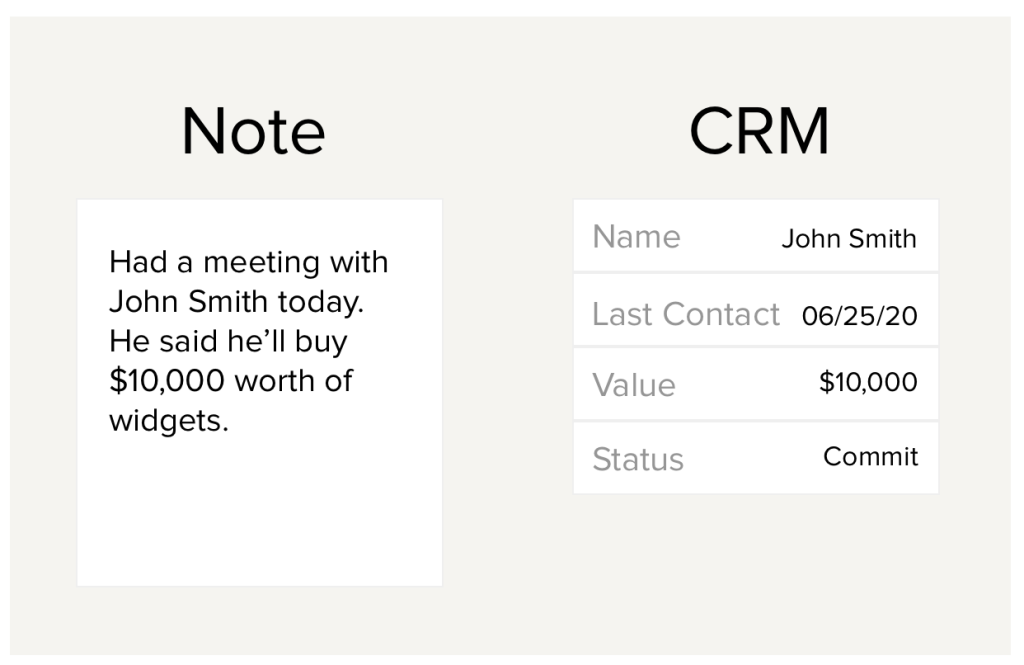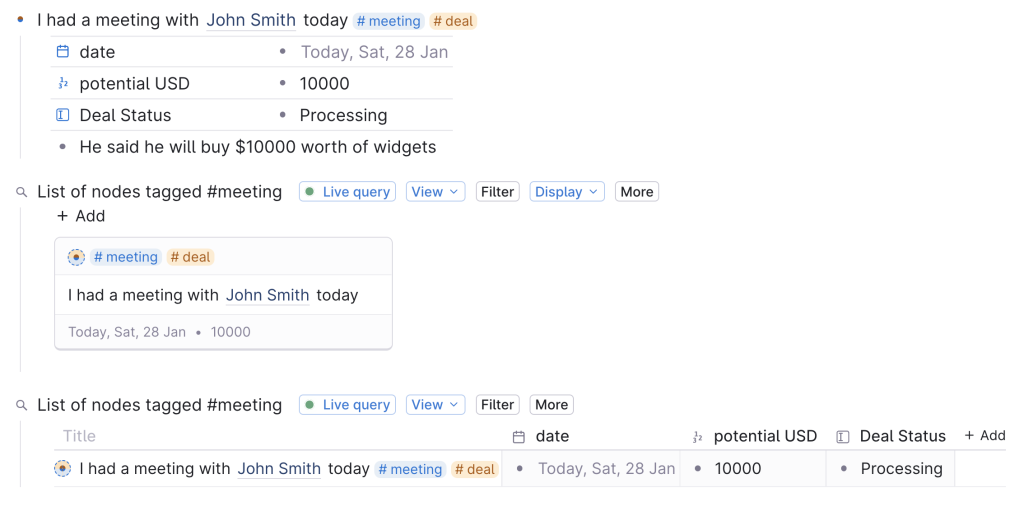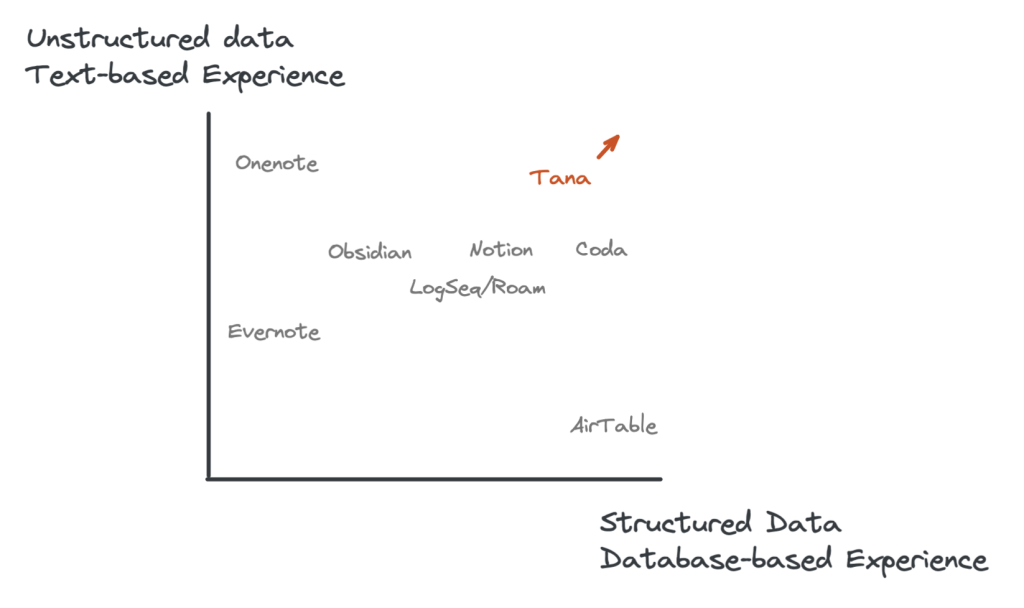Tana is bringing us one step closer to a better way of managing our knowledge (WIP)
The gap between structured vs unstructured notes
Notes can be thought of as data, which can be represented in either a structured or unstructured format.
Unstructured notes, such as free-form text or a whiteboard, are easy to write and read but can be difficult to query and analyze.
Structured notes, such as tables, are more organized and efficient for querying, analyzing, and operationalizing, but may not be as natural for writing and reading.
Different note formats are useful for different contexts, such as free-form for meeting minutes or summarizing a book, whiteboards for brainstorming, and tables for managing a CRM.
Despite notes being the same, different representations often requires different tools to create, resulting in a silo between our notes, making our data disconnected and causing context-switching

How Tana is fixing the gap
Everything is a node. Any node or word within can be identified as an entity with its own structure, allowing users to query and get the desired representations for different context.


The challenges ahead
- Automatically organizing and retrieving (AI/ML)
- Automatically identify identities
- Other representation models of notes (whiteboards, user-flows)